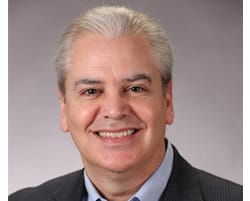
Professor, Clinician, and Internationally-Recognized Expert in Suicidology
Dr. Jobes is a Professor of Psychology and Associate Director of Clinical Training at The Catholic University of America in Washington, D.C. and the Director of the CUA Suicide Prevention Lab (CUA SPL). He is also an Adjunct Professor of Psychiatry, School of Medicine, Uniformed Services University of the Health Sciences. Dr. Jobes’ research and writing in suicide has produced well over 100 peer reviewed publications (including six books on clinical suicidology). As an internationally recognized suicidologist, Dr. Jobes is a past President of the American Association of Suicidology (AAS) and was a recipient of that organization’s 1995 “Shneidman Award” in recognition of early career contribution to suicide research. Dr. Jobes also received the 2012 AAS “Dublin Award” in recognition of career contributions in suicidology and the 2015 AAS “Linehan Award” in recognition for his ground breaking clinical research. In 2016, Dr. Jobes was awarded the Faculty Achievement Award for Research at The Catholic University of America for his research contribution and the work of the SPL.
Dr. Jobes has served as a research consultant to the Centers for Disease Control and Prevention and has been a consultant to the Institute of Medicine of the National Academy of Sciences, the National Institute of Mental Health, the FBI, the National Security Agency, the Department of Defense, and the Department of Veterans Affairs. Dr. Jobes is a member of the Scientific Council and the Public Policy Council of the American Foundation for Suicide Prevention (AFSP) and is a Fellow of the American Psychological Association.
Board-certified in clinical psychology (American Board of Professional Psychology), Dr. Jobes has over 30 years of clinical practice experience and continues to maintain a private clinical and forensic practice in Washington DC.
Office Hours
Hosted once per quarter, Office Hours provide an opportunity for CAMS Trained™ clinicians to meet with Dr. Jobes.
In order to be accepted into Office Hours, clinicians must be CAMS Trained and listed on our CAMS-care Clinician Locator.
If you are CAMS Trained but not yet on our locator, join today to be invited to the next Office Hours.
Select Publications
2019 | Brausch, A. M., O’Connor, S. S., Powers, J. T., McClay, M. M., Gregoray, J. A., & Jobes, D. A. (2019). Validating the suicide status form for the collaborative assessment and management of suicidality in a psychiatric adolescent sample. Suicide and Life-Threatening Behavior.
2019 | Corona, C. D., Gutierrez, P. M., Wagner, B. M., & Jobes, D. A. (2019). Assessing the reliability of the CAMS rating scale using a generalizability study. Crisis: The Journal of Crisis Intervention and Suicide Prevention, 40, 273-279.
2019 | Corona, C.D., Gutierrez, P.M., Wagner, B. M., & Jobes, D. A. (2019). The psychometric properties of the Collaborative Assessment and Management of Suicidality rating scale. Journal of Clinical Psychology, 75, 190-201.
2019 | Hamadi, A., Colborn, V. A., Bell, M., Chalker, S. A., & Jobes, D. A. (2019). Attentional bias and the suicide status form: Behavioral perseveration of written responses. Behavior Research and Therapy.
Education & Credentials
2010 | Fellow of the American Psychological Association (Division 12—Clinical Psychology)
2002 | Board Certified in Clinical Psychology, American Board of Professional Psychology
1999 | The National Register of Health Service Psychologists
1990 | Licensed Psychologist in the District of Columbia
1989 |Licensed Psychologist in Maryland —inactive status
1988 | Ph.D., Clinical Psychology, American University (Washington, DC)
1984 | M.A., General Psychology, American University (Washington, DC)
1981 | B.A., Psychology, University of Colorado (Boulder, CO)